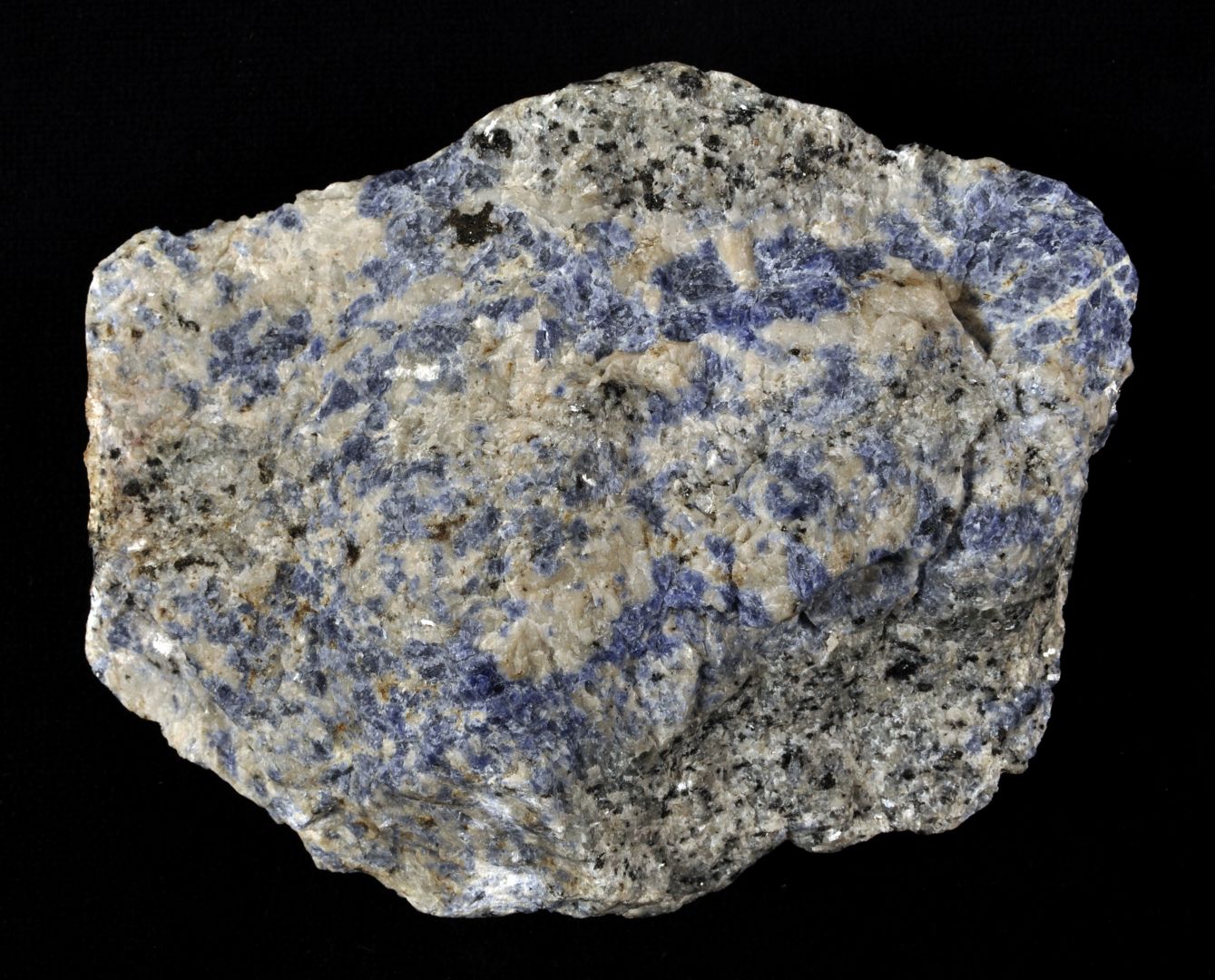MINERALS OF THE CARPATHIANS - 3. view / Giurgeu, Ciuc and Vrancei Mountains
Minerals of alkaline igneous rocks from the Eastern Carpathians
Alkaline igneous rocks are those with a higher alkali metal content (sodium, potassium) than ordinary igneous rocks and contain feldspathods (e.g., nepheline), alkali pyroxenes or alkali amphiboles. These are not very common rocks. On a larger scale in the Carpathians, they can be found only in the Ditău massif. The most common type of rock here is nepheline syenite, which contains several rare and less rare rock-forming minerals. Among them, are biotite, sodalite, cancrinite, aegirine, kaersutite, zircon, titanite, nepheline, monazite, allanite, epidote and apatite are presented in the exhibition. The most striking of these is the blue sodalite; here, we present a nepheline syenite containing sodalite. This rock was formerly called ditróite after the Hungarian name of the settlement of Ditrău.
In the picture: Nepheline syenite containing blue sodalite, Jolotca (Romania). Size: 6 cm. Photo by Géza Kulcsár.
